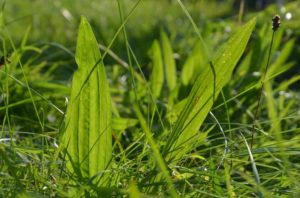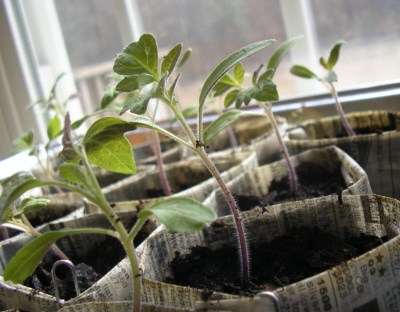Preparedness Medicine, Part I: Local Volunteers
 In the preparedness domain, no subject has any more importance than caring for and optimizing the human body. Aside from a warm and safe place to stay, nothing will be more important than the recovery and maintenance of health in any kind of difficult time. In this article, in this series and in pretty much anything this author writes, there is an emphasis on natural health now and in any sort of pinch. No one has spent any more emphasis on this subject. Further, it is through healing ourselves naturally that our own psychological sovereignty is preserved. In this article we shall specifically introduce the idea of local volunteers and tell a little about a few of them to introduce the power of this preparedness strategy.
In the preparedness domain, no subject has any more importance than caring for and optimizing the human body. Aside from a warm and safe place to stay, nothing will be more important than the recovery and maintenance of health in any kind of difficult time. In this article, in this series and in pretty much anything this author writes, there is an emphasis on natural health now and in any sort of pinch. No one has spent any more emphasis on this subject. Further, it is through healing ourselves naturally that our own psychological sovereignty is preserved. In this article we shall specifically introduce the idea of local volunteers and tell a little about a few of them to introduce the power of this preparedness strategy.
Local volunteers are plants that grow freely, sometimes in spite of us, which are also quite useful as food and medicine. While every area has many of these plants unique to that area, there is quite a list of plants like this that either grow almost everywhere around the globe or that can be grown with ease almost anywhere.
The first plant that is on our list today is plantain. This should not be confused with plantain bananas, but rather is any one of over 100 Plantago species growing around the world. One can easily find pictures of the many species on the internet and can probably walk through disturbed areas, lawns or parks and find plantain to identify it. It is best to gather it somewhere that is not saturated with chemicals, pesticides and fertilizers.
Medicinally, this plant has a drawing effect when applied as a fresh leaf (or ointment or tincture made from the fresh leaf) to a bite, sting or puncture wound. Recently one of the author’s clients made up the tincture for a friend who was having terrible reactions to mosquito bites. She followed instructions and used Everclear with the fresh leaf. She put the liquid in a spray bottle and had her friend spray on and cover all exposed skin whenever she went out. As usual, she got many bites, but none of them ever appeared afterward! None showed up as an itch or bump or anything. The beauty of plantain leaf is its power to draw out venom, infection and contamination while simultaneously calming and improving immune/inflammatory response. The implications of this should be clear that virtually every bite can be rendered harmless this way. More than one case exists in literature where plantain leaf was used for severe immune reactions to bee stings and the topical application over the sting pulled out the poison and saved the person.
When ingested as tea it is quite nourishing and is also diuretic and drying to the body. It strengthens the kidneys, spleen and immune system in relatively small doses (1/2 cup of the tea 2 x daily or two leaves eaten as often). It is dense with nutrition and has been used also for weak or lost blood. The drying, astringent property makes it one of our best herbs for injuries and burns where there might be infection. Plantain is also quite cell proliferant. This property speeds healing of any kind, anywhere.
Long-term infection, or people prone to such, may benefit from plantain leaf tea when consumed regularly. It dries out the congested lymph and phlegm. It thereby creates conditions in the body where infection is not welcome. This effect, as well as the tonifying effect on the kidneys, makes plantain leaf a wonderful aid for the diabetic.
Finally, the seeds of plantain have long been used for calming and bulking the bowel for better elimination. Probably the name most known is “psyllium” which is a species of plantain. The seeds of any plantain can be used, but it is quickly noted that the small seeds of most species make this less fun to gather than buying the psyllium.
The next herb on our list is chickweed. This herb moistens instead of dries, but both plantain and chickweed are cooling and calming to the tissues they reach. Chickweed is useful as a food since it is delicate and sweet. Like many wild foods, chickweed is quite nutrient dense, especially in minerals and carbohydrates. The medicinal use for which chickweed is most famous is for various dermatoses, such as dermatitis, psoriasis and eczema. The tea is drunk internally and also applied topically to the affected area. It cools the affected area and is thought to cause the liver to cool and push its heat out through bile instead of out through the skin. It certainly works very well and is especially useful for small children and infants.
Finally, chickweed got immortalized by Dr. John R. Christopher as an aid for obesity. He apparently understood what has escaped most modern natural healers: obesity has nothing to do with metabolic rate and everything to do with inflammation and irritation in the gut. While chickweed probably calms and slows metabolism, it has a gradual, steady healing effect on obesity via healing the inflamed gut. The thyroid and adrenal glands have a chance to return to normal when the systemic inflammation (coming from antibody-antigen complexes that escape the gut) is reduced. Of course, an exclusively whole, mostly raw food diet is recommended in any case of need to heal.
Other herbs on the list that are easily found around the globe will have to be put in a list in the interest of space for this article. These are: nettle, various mallow species, lamb‘s quarter, roots of any grass, various wild mustard species, various pigweed species, pines and spruces, purselane, raspberry leaves, mullein, poplar buds, oak bark and comfrey. In later articles, various herbs of these will be discussed in self-healing. This list is a good intro to herbs that either grow wild just about everywhere or could be grown in any garden, yard or planter box quite easily.
In this article, we introduced in some detail two very common herbs: chickweed and plantain. We discussed how they are useful in medicine in a pinch and why we might want to know what they look like. We also gave a list of herbs that commonly grow wild in any area or could be easily grown in almost any situation, anywhere in the world. In coming articles in this series, we will discuss wide uses of herbs for the preparedness enthusiast.
By Dr. Kal Sellers
[wpgfxm_divider divider_image=”css”]
Dr. Kal Sellers has been researching natural options for healing literally since childhood. He grew up practicing reflexology, CRA, applied trophology, herbal medicine and massage. Today he is a Doctor of Chiropractic, a Master Herbalist and has taught herbal medicine and natural healing in Europe, Asia, South America and all over the U.S. He maintains an on-line presence for teaching herbal medicine excellence to the novice and clinical practitioner alike. He also has a passion for off-grid living and independence from central resources. He lives in the mountains of Wyoming with his wife, 6 daughters and 1 son. http://www.rawherbalist.com






